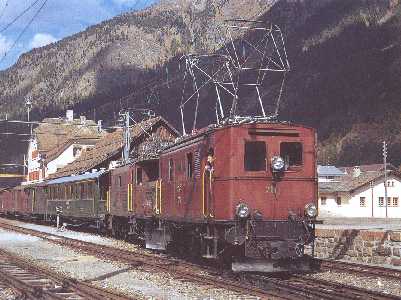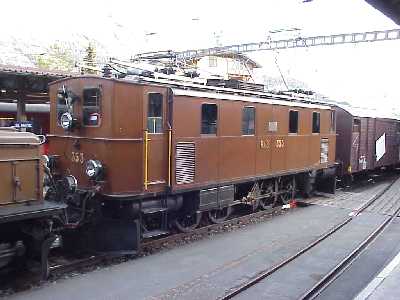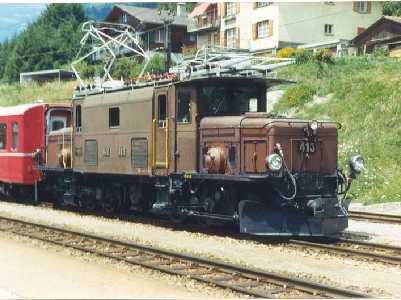Hi all, Back at the dawn of time errrrrrrr I mean mainline electrification on the RhB, the first line to be electrified was the Engadine line from Samedan to Scuol. The RhB decided to purchase seven engines of the Ge2/4 class (201 -207), built by SLM (Swiss Locomotive Works, Winterthur) and BBC (Brown Boveri, Baden) they were delivered in 1912 and 1913. The electrification is at 11kV 16 2/3 cycle. Max grade on the Engadine line is 2% (slight by Swiss mountain railway standards.

Photo © Copyright Maurizio Polier In addition to the Ge 2/4 engines RhB tried out the Ge 4/6 types 301 and 302 with one type of drive - two large Deri motors coupled to a crankhaft by means of a triangular rod arrangement. The later Ge 4/6 351 - 55 OTOH had just one motor and the same drive arrangement to the crankshaft as the Ge 2/4

Photo © Copyright Maurizio Polier Interesting jobs for the Ge 2/4 were the runs in the Rhine valley (typically Landquart to Thusis hauling passenger locals) and as helpers on the 3.5% section between Filisur and Samedan. The 300 series was also used on the Chur-Disentis line and occasionally on the Albula line. Perfect excuse for me to have a 205 - which BTW is the dimensionally most accurate RhB engine in the LGB line! - and a 353. Apart from the proto justification, my experience is that visitors are more intrigued with electric side rod engines than the more or less uniform modern variety. Which was the reason to buy two 400 series Kroks, as well.

Photo © Copyright Maurizio Polier



